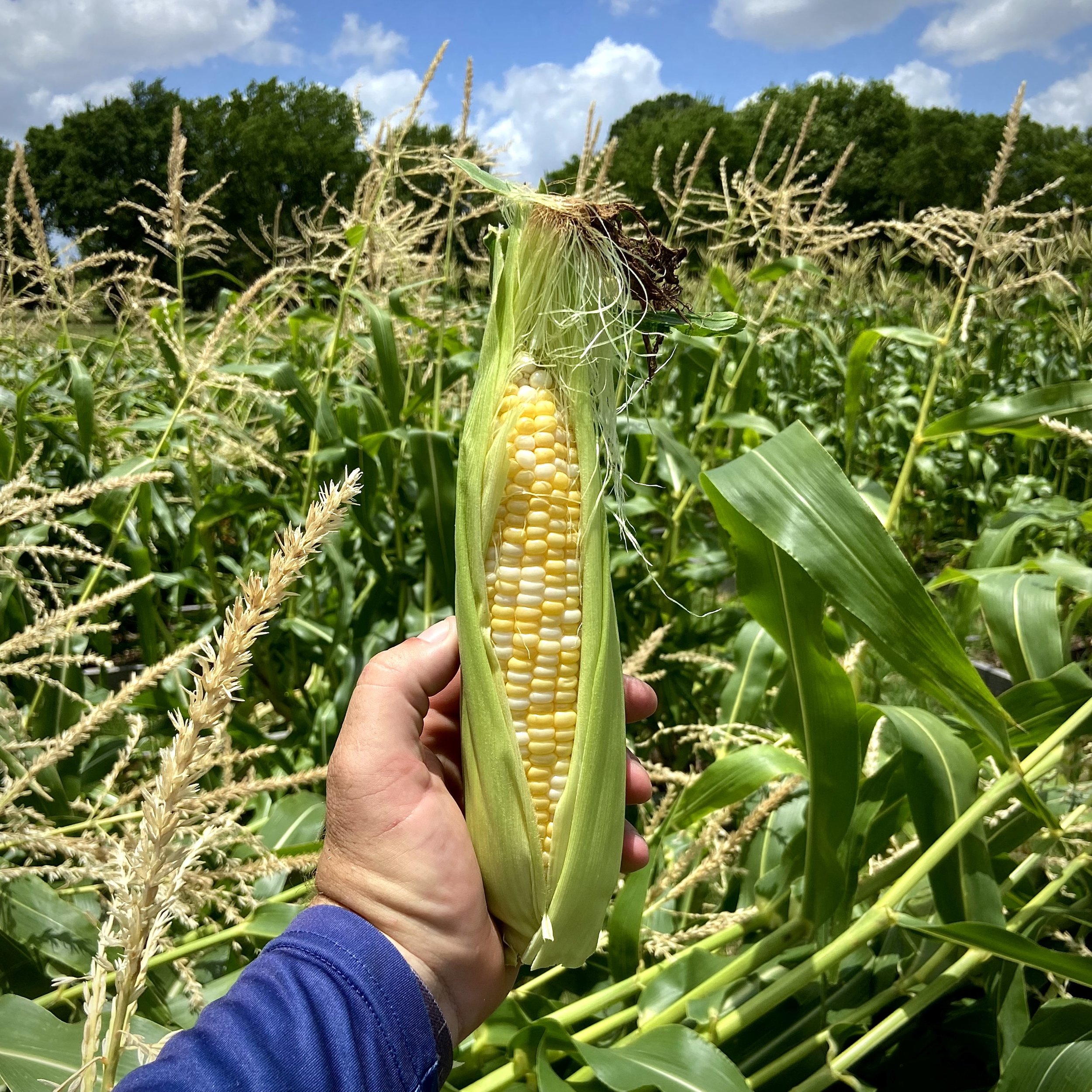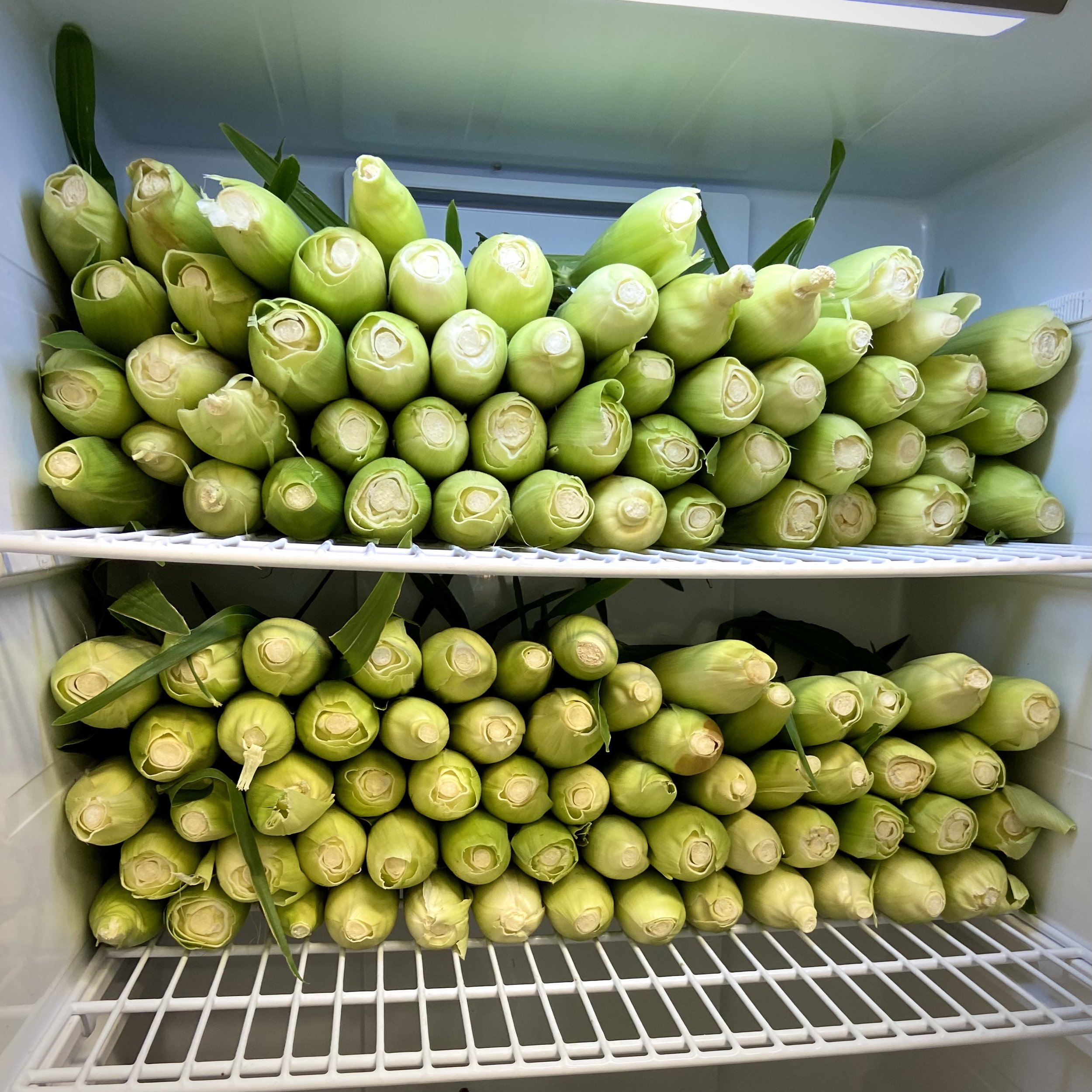One Word: Corn
By Josh Singleton | Founder, The Neighborhood Garden Project
Sustained from Above: What Corn Taught Us About Provision
People often ask us, “How are you going to keep The Neighborhood Garden Project going?” or “What happens when the grant runs out?” Those are fair questions. We don’t get defensive when folks ask—they usually mean well. However, it does show how accustomed we've become to the world’s way of thinking. We’ve learned to trust systems instead of seasons. Numbers instead of fruit. Busy work instead of steady growth.
But here’s the truth. We’re not held up by grants. We’re held up by God. Yes, we receive funding, but that’s not the source. That’s just one of the ways He provides. We don’t chase money. We don’t push things open. We don’t move just because we’re anxious. We wait. We pay attention. And when the time is right and the right relationships line up with the right assignment, we step forward. That’s how we’ve done everything so far. That’s how we got started. And that’s how we’ll keep going.
This spring, we planted 540 corn seeds across 9 raised beds. From those seeds, we picked 297 ears of corn. Each one full. Each one sweet. When we counted it up, that corn held over 231,000 kernels. And what’s wild is—we started with less than one ear’s worth of seed. That’s not just gardening. That’s what happens when things grow the way God designed them to. You plant in good soil. You water in season. You don’t rush it. And somehow, it multiplies far more than we could ever figure out on our own.
But here’s where it really starts to hit home. Corn doesn’t grow on its own. It’s made to grow with others. Every ear of corn starts out with a bunch of thin little strands called silks. Each silk is connected to one kernel. But here’s the deal—no pollen, no kernel. Every silk has to be touched by pollen for the kernel to form.
And the pollen? It comes from the top. That’s where the tassels are, and when they mature, they drop pollen down onto the silks. That’s how it works—top-down. The silk doesn’t reach up and grab it. It just sits there, open and ready to receive. That’s not working harder. That’s learning how to be still and trust.
But it’s not just one stalk doing the work. Corn has to be planted close together so the pollen has somewhere to go. One stalk by itself can’t do much. It needs others around it—strong and ready to share what they’ve got. That’s how pollination happens. Quiet. Natural. And in its own time.
That’s how our funding works, too. We don’t chase money or beg for support. We don’t pitch things just to try and make them happen. We plant what we’ve been given. We water what lines up with what God’s doing. And we wait for His wind to move. Sometimes that shows up in a person. Sometimes in a parish. Sometimes in a grant. But the real source is always Him. The money might come through different channels, but the provision comes from above.
So when a grant ends, we don’t panic. Because we never depended on that grant in the first place. It was just one of many vessels God used. Not the oil itself.
The world trains people to scramble and worry. It says you’ve got to get yours while you can—there’s not enough to go around. But corn teaches a different way. It’s patient. It’s still. And when everything lines up—timing, soil, wind—it multiplies like crazy. We planted less than one ear of corn and got almost 300 ears back. That’s over 231,000 kernels. Not because we pushed it. But because we trusted the process God already wrote into the seed. Not by control. Not by pressure. By design. By trust.
This isn’t just about keeping the garden going. It’s about feeding people—really feeding them. Not just with food, but with something deeper. That corn harvest didn’t just look good in the beds. It filled refrigerators. It showed up in meals. It brought people together. Corn is packed with things the body needs—fiber, vitamins, minerals, and natural sugars that keep us going. But more than that, it’s a picture of how God provides when we trust Him.
The way we receive funding isn’t just about getting money. It’s about how that money comes. Through relationships. Through prayer. Through waiting and watching for the right moment, not chasing after every opportunity that shows up. When the support lines up with what God is already doing, it’s not just money—it’s nourishment. You can feel the difference. It’s alive. It strengthens everybody it touches. That’s how we know it’s from God.
There’s a photo from St. Paul’s—corn packed in their fridge, row after row. That’s not just storage. That’s overflow. That’s what happens when you trust the process, take care of the seed, and stay in step with the One who gives the growth.
We’re not just growing food. We’re growing the people who grow it. We’re growing trust. We’re growing awareness. We’re growing the kind of alignment that makes a place come alive. Just like the corn, we stand ready. Not striving. Not forcing it. But rooted, steady, and open to the wind of the Spirit. That’s where our strength comes from. Not from money. From mission. And when the mission lines up with God’s heart, He always makes a way.
So when someone asks, “How are y’all going to keep this going?”—we smile. Not because we’ve got it all figured out, but because we’ve seen the truth. We know the pressure a lot of nonprofits feel—doing good work but burning out trying to make ends meet. It’s tempting to go back to the world’s systems. But the answers we’re all looking for? They’re already built into the way God made the world to work.
Sowing and reaping. Rest and rhythm. Trust and timing. These aren’t just farming tools. They’re Kingdom tools. God wired the truth into the land. It’s right there in how things grow. We sit and think and plan and worry—but the very breath we’re using is proof that He already gave us what we need. That breath came from Him. It’s not just air. It’s a reminder. A quiet one. But powerful.
Plants don’t grow by panicking. They grow by design. And the Garden Project is the same way. We’re not scrambling to survive. We’re watching, waiting, and moving when He says go.
So when someone asks again how we’ll make it, we don’t over-explain. We say what we’ve come to know is true.
One word: Corn.
“Let those who have ears, let them hear!”



